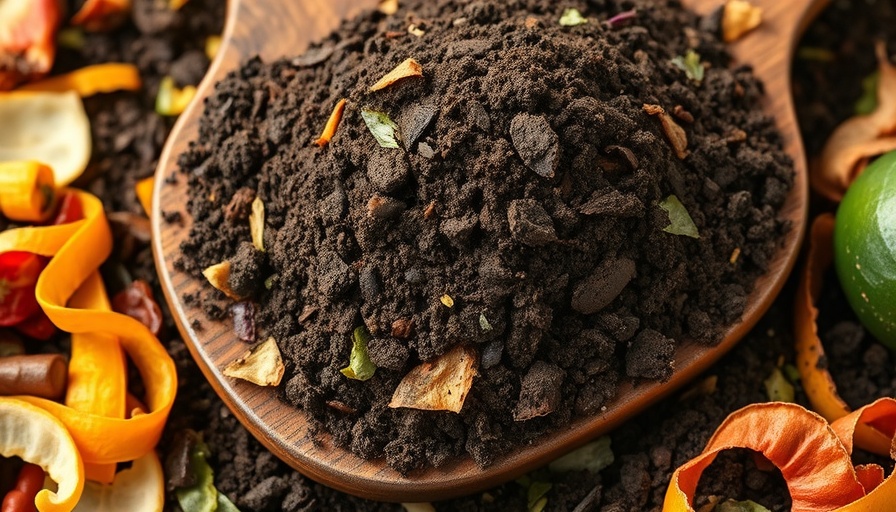
The Magic of Composting: Nature's Ultimate Resource
Composting is much more than just a trend; it's a sustainable practice that has been embraced by gardeners and environmentalists alike. Imagine being able to turn kitchen scraps, fallen leaves, and grass clippings into dark, rich compost that serves as a nutrient powerhouse for your garden. This "black gold" not only enriches the soil but also reduces waste, giving you a reason to feel good about your environmental impact. With the world becoming increasingly concerned about sustainability, composting offers a simple yet effective way to do your part.
Why Should You Consider Composting?
One of the most compelling reasons to dive into composting is its myriad benefits for both your garden and the planet. It improves your soil structure, supports healthy plant growth, and creates a more balanced ecosystem in your backyard. Moreover, composting decreases landfill waste, which is critical in an era of rising waste management issues. When organic materials decompose in landfills, they produce greenhouse gases; composting mitigates this by allowing for aerobic decomposition.
Getting Started: Building Your Compost Pile
Starting a compost pile is easy, and it doesn't require a backyard—I am a firm believer you can compost in a city setting using containers or bins. Begin by selecting a convenient location. Aim for a balance of green materials (like fruit scraps and grass clippings) and brown materials (like dried leaves and cardboard). The ideal ratio is about three parts brown to one part green. Don't forget about moisture; your compost should feel like a damp sponge. Turning your pile regularly helps introduce oxygen and speed up the decomposition process, which is essential for generating that nutrient-rich compost.
Key Materials to Use for Composting
Composting materials fall into two categories: brown and green. Brown materials, like dry leaves, twigs, and paper, provide carbon, while green materials, like vegetable waste and coffee grounds, offer nitrogen. Additionally, you can include shredded paper, straw, and even certain types of hair or fur. Keep in mind to avoid animal products (like meat and dairy), as they can attract pests. This mixture not only helps create a healthy compost but also reduces landfill waste.
Using and Maintaining Your Compost
Once your compost has matured—typically taking three to six months—you can use it to enrich your soil for various garden projects. Whether you're working on a vegetable garden, flower beds, or landscaping ideas, compost can enhance your soil's nutrient levels. For the best results, layer it into your garden beds or mix it into potting soil for container gardening. Compost is particularly beneficial for growing garden vegetables, supporting their healthy development without the need for chemical fertilizers.
Overcoming Challenges in Composting
While the benefits are tremendous, challenges can arise in composting. One common issue is balancing the carbon-nitrogen ratio. If your compost is too dry or too wet, it may decompose slowly or produce unpleasant odors. To make your composting experience rewarding, consider experimenting with different materials to find the ideal mix, regularly turning the pile, and maintaining moisture levels. Familiarize yourself with pests that may interfere with composting, and learn the best pest control methods to keep your composting journey enjoyable.
The Impact of Composting: A Sustainable Future
Composting isn’t just about gardening; it’s about being part of a global movement toward sustainability. By adopting composting practices, you contribute to a more sustainable future for our planet. It is an opportunity to teach younger generations about the importance of environmental stewardship and cultivating a love for plant care and gardening. Embrace the journey of composting—you may find it brings immense satisfaction, both in your garden and for the Earth.
Take Action Now!
As you embark on your composting journey, remember that every small action counts. From households to community gardens, your participation in composting can inspire others to join this sustainable practice. Why not start a compost pile today? You'll save money on fertilizers, produce healthier plants, and contribute positively to the environment—all from materials you would have otherwise discarded. Step into the world of composting and watch your garden thrive!
 Add Row
Add Row  Add
Add 




Write A Comment